
rockyit98 - 26-11-2020 at 07:28
i was making 98% H2SO4 and i forgot one of my magnetic stir bars in the vasal. so it got hotter than rated 250C and became a dud. even before that it
was getting weaker by repeated use.
then I remembered watching a "how it's made" episode where they showed how magnets are made.in it
by pulsing the pre magnetize "magnet" with a strong magnetic field it becomes a magnets. it's due to a process called " Magnetic hysteresis ".with
this knowledge i made a simple yet effective way to remagnetize such stir bar.
WARNING- RISK OF ELECTRIC SHOCK
do this away from sensitive electronics
repeat at your own risk
using magnet wire i wound a coil with a bobbin that match the stir bar so it will side right in easy. about 100
turns (i forgot to count  )
)
i used 330uF 400V Electrolytic capacitor (mind the polarity ) charged up to 325V
using AC mains by using full bridge rectifier and a incandescent light bulb. after charging the
capacitor while being careful I removed it.
after i inserted the stir bar inside i fix it at the center and parallel with the coil with a dab of hot glue. after it's secured in place i shorten
the capacitors terminals with the coil. with that tiny sparks flew and it was done.it was better than new!
NOTE : important
remember to strip the enamel at the tips of the magnet wire
use rubber gloves and eye protection , double check polarity otherwise capacitor will explode, use rated 400V or higher capacitor

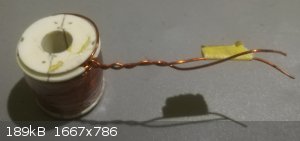
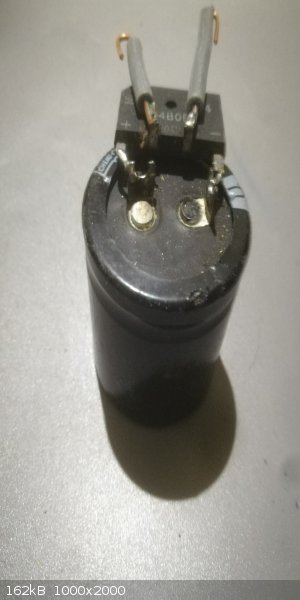
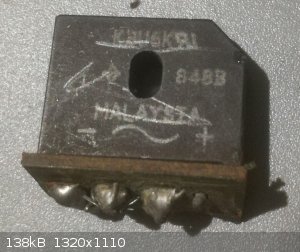
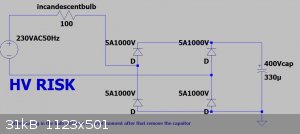
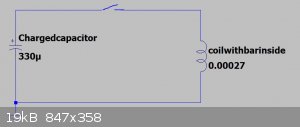
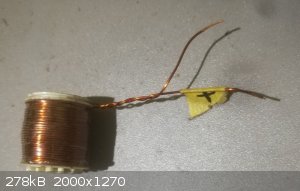
VeritasC&E - 31-7-2022 at 01:43
What is the influence of temperature on this?
One one side maybe a stir bar remagnetizes in a lower magnetic field when initially at a higher temperature (as long as the max temperature reached
during the process stays sufficiently below its curie temperature).
One the other side, while a colder stir bar maybe would require a greater magnetic field to achieve equal magnetization, it is possible that more
magnetic domains would remain in their "magnetized" state after the process, and thus, that a greater degree or magnetization can be achieved this way
(especially since the process probably increases the temperature of the stir bar while magnetizing it).
It would be interesting to measure the temperature difference induced during (re)magnetization, and to try to accordingly cool it down just as much as
necessary for its maximum temperature during the process to stay under, say, 10C. Whether that requires a freezer or a nitrogen bath is a good
question.
Note that this is all based on assumptions from my part. I am not sure that this is scientifically correct.
In any case, thank you for this post which certainly will be useful for many (including myself). I'll be much more relaxed about the conditions in
which I opt for magnetic stirring when I have the capacity to remagnetize my stir bars.

 )
)